Welcome to my comprehensive guide on the best water parameters for goldfish care. As a goldfish enthusiast, I understand the importance of maintaining optimal water conditions to ensure the health and longevity of these beautiful creatures. In this guide, we will delve into the ideal water parameters for goldfish, including temperature, pH levels, ammonia and nitrite levels, filtration systems, and much more. By following these guidelines, you can provide your goldfish with the perfect environment to thrive in.
Table of Contents
Key Takeaways:
- Optimal water conditions are crucial for goldfish health and longevity
- Proper temperature, pH, ammonia and nitrite levels, filtration systems, and water hardness are key factors to consider
- Regular monitoring and testing of water parameters can help maintain optimal conditions
- Water changes and the use of water conditioners can help control nitrate levels and remove harmful substances like chlorine and chloramine
- Goldfish require well-oxygenated water for respiratory health, so adequate surface agitation and aeration are important
Best Water Parameters for Goldfish: Why Water Parameters are Important for Goldfish
As a responsible goldfish owner, maintaining water quality is crucial for the health and longevity of your beloved pets. Goldfish are delicate creatures and require certain water quality guidelines to ensure a healthy living environment. In this section, I will highlight the ideal water parameters for healthy goldfish and why they are vital for your finned friends.
Goldfish are susceptible to stress, diseases, and other health issues if their water quality is not maintained correctly. Poor water quality can cause ammonia and nitrite buildup, which are toxic substances that can harm your fish. Similarly, fluctuating water temperatures, high nitrate levels, and improper pH levels can also lead to various health issues.
By maintaining the ideal water parameters, you can create a healthy environment for your goldfish. This includes ensuring proper water temperature, pH levels, ammonia and nitrite levels, nitrate levels, effective filtration, and adequate oxygenation. Each of these parameters plays an important role in maintaining the overall well-being of your goldfish.
Effective water filtration is essential for maintaining optimal water conditions in your goldfish tank. The filtration system should be capable of removing waste, debris, excess food, and harmful substances effectively. Without proper filtration, the water quality will deteriorate quickly, resulting in various health issues for your goldfish.
Regular monitoring and testing of water parameters are necessary for the long-term health of your goldfish. You can use test kits to measure temperature, pH, ammonia, nitrite, nitrate, and other crucial parameters to ensure they are within acceptable ranges. By staying vigilant and proactive, you can quickly address any issues that may arise and maintain a healthy living environment for your goldfish.
“Proper water quality is the foundation of goldfish care. Without it, your goldfish may suffer from various health issues, ultimately leading to a shorter lifespan.”
In conclusion, maintaining the water quality for your goldfish is essential for their overall health and well-being. By understanding the water quality guidelines for goldfish and ensuring the optimal water conditions, you can provide your finned friends with an environment that they can thrive in. Remember, a healthy goldfish is a happy goldfish!
Best Water Parameters for Goldfish:Ideal Temperature Range for Goldfish
When it comes to achieving ideal water conditions for goldfish, one of the most crucial factors to consider is the water temperature. Goldfish are coldwater fish and thrive best in temperatures between 65 to 75 degrees Fahrenheit (18 to 24 degrees Celsius). Any temperature outside of this range can cause stress and negatively impact their health.
It’s important to maintain a consistent temperature within the ideal range to ensure your goldfish’s metabolic function and overall well-being. Fluctuations in water temperature can lead to health issues and even death in severe cases.
One way to regulate the water temperature is by using a reliable aquarium heater. When selecting an aquarium heater, choose one that can provide consistent and accurate heating to meet your goldfish’s needs. A thermometer should always be used to monitor the water temperature to ensure it remains within the ideal range.
Best Water Parameters for Goldfish: Ideal pH Levels for Goldfish
As discussed earlier, maintaining optimal water conditions is crucial for the health and well-being of your goldfish. One of the key factors to consider is the pH level of the water.
Goldfish prefer a pH level between 6.5 and 7.5. If the pH level strays too far from this range, it can cause stress and affect their overall health. Regular testing and adjustment of the pH level are essential to ensure your goldfish are thriving in the best possible environment.
In addition to regularly testing the pH level, it is also important to monitor other water parameters, such as temperature and ammonia levels. Achieving ideal water conditions for goldfish requires attention to detail and a commitment to maintaining a healthy environment.
Remember that different types of goldfish have varying requirements, so it’s important to research the specific needs of your fish. By providing the ideal water parameters for your goldfish, you can help them live a long and healthy life.
Ideal Water Parameters for Goldfish: Ammonia and Nitrite Levels
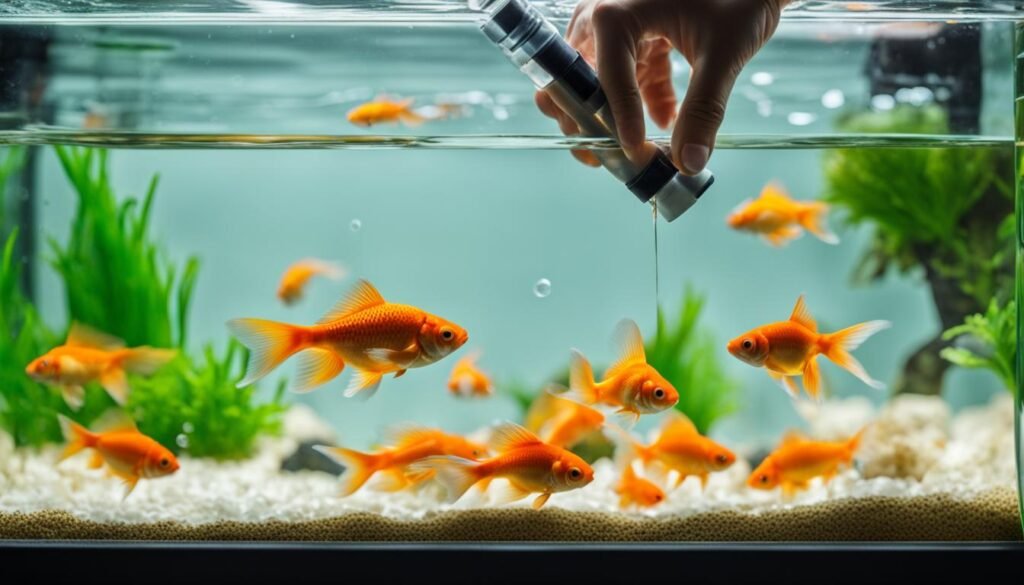
When it comes to maintaining water quality for goldfish, ammonia and nitrite levels are crucial factors to consider. Both of these substances are toxic to fish and can cause significant harm to their health if not controlled.
Ideal water parameters for goldfish require ammonia and nitrite levels to be kept as close to zero as possible. This can be achieved through regular water testing and the use of a high-quality filtration system.
When goldfish produce waste, uneaten food, and other organic matter, it breaks down into ammonia. Ammonia is highly toxic to fish, causing stress, respiratory problems, and even death in high concentrations. Nitrite is produced by beneficial bacteria in the aquarium as they break down ammonia. While less toxic than ammonia, nitrite can still cause harm to goldfish in high levels, leading to nitrite poisoning.
It is essential to maintain an optimal level of beneficial bacteria in your filtration system to keep ammonia and nitrite levels low. Regular water changes can also help remove accumulated waste and reduce ammonia and nitrite in the water.
To ensure that you are within the ideal water parameters for goldfish, it is advisable to test your water weekly. Test kits are widely available and will measure ammonia, nitrite, nitrate, pH, and other crucial parameters. By regularly monitoring your water quality, you can quickly address any issues that may arise and ensure that your goldfish remain healthy and happy.
Nitrate Levels and Water Changes
Maintaining the ideal water parameters for goldfish includes controlling the nitrate levels in the aquarium. Nitrate is a byproduct of ammonia and nitrite breakdown and can accumulate in the water over time. While low levels of nitrate are generally tolerable for goldfish, it is important to keep them below 40 ppm to ensure their optimal health.
One of the most effective ways to control nitrate levels is through regular water changes. Experts suggest replacing 10-20% of the aquarium water every week to maintain a healthy nitrate level. However, if the nitrate levels are high, more frequent water changes may be necessary.
When performing a water change, it is essential to use a water conditioner to remove any chlorine or chloramine present in the tap water. Chlorine and chloramine can be harmful to goldfish and can affect their well-being.
In addition to water changes, it is important to keep the aquarium clean and perform regular maintenance. This includes cleaning the filter, removing any uneaten food, and vacuuming the substrate to remove any debris or waste.
Filtration Systems for Goldfish Tanks
Maintaining water quality is critical for the health and well-being of your goldfish. Choosing the right filtration system is essential to achieving ideal water conditions and preventing water quality-related problems.
The purpose of a filtration system is to remove waste, excess food, debris, and harmful substances from the water. There are three main types of filtration systems: mechanical, biological, and chemical.
| Type of Filtration | Description |
|---|---|
| Mechanical Filtration | This type of filtration removes debris and solid waste from the water. It typically involves the use of a filter pad, sponge, or floss that physically traps particles as water passes through. |
| Biological Filtration | This type of filtration relies on beneficial bacteria that break down toxic ammonia and nitrite into less harmful nitrate. The bacteria grow on surfaces such as filter media, rocks, and aquarium decorations. |
| Chemical Filtration | This type of filtration involves the use of chemical media, such as activated carbon or zeolite, to remove impurities from the water. |
When choosing a filtration system for your goldfish tank, it is essential to consider the tank size, stocking density, and the type of filtration required. A good rule of thumb is to choose a filter that is rated for at least twice the tank size. For example, if you have a 30-gallon tank, choose a filter that is rated for a 60-gallon tank.
In addition to the type of filtration system, it is also important to consider the flow rate of the filter. Goldfish produce a lot of waste, so a higher flow rate is typically better. However, too much flow can create strong currents that stress or injure your goldfish. It’s essential to find the right balance.
Regular maintenance of the filtration system is crucial to ensure optimal water conditions. The filter media should be cleaned or replaced regularly, depending on the type of filtration system and the manufacturer’s recommendations.
By choosing the right filtration system and maintaining it regularly, you can achieve ideal water parameters for your goldfish, ensuring their long-term health and well-being.
Oxygenation and Aeration for Goldfish
When it comes to achieving ideal water conditions for goldfish, oxygenation and aeration are crucial factors to consider. Goldfish require well-oxygenated water for their respiratory health, and without it, they may struggle to breathe.
There are several ways to ensure adequate oxygenation in your goldfish tank. One effective method is to increase surface agitation by using an air stone or water pump. This will create ripples and movement on the surface of the water, effectively increasing oxygen exchange.
Another option is to install a filter that provides adequate aeration. A filter that agitates the water surface will help increase oxygenation as well.
| Tip | |
|---|---|
| Be mindful of the stocking density in your goldfish tank, as a higher number of fish can deplete oxygen levels more quickly. |
Achieving optimal water conditions for goldfish requires adequate oxygenation and aeration. By using an air stone, water pump, or filter with surface agitation, you can help ensure that your goldfish are getting the oxygen they need to thrive.
Ideal Water Hardness for Goldfish
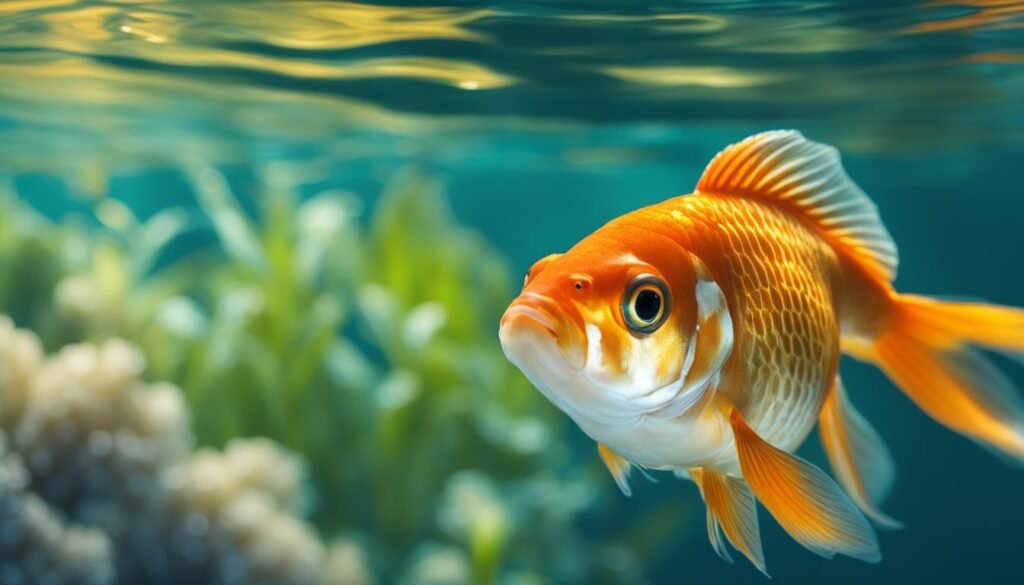
One of the critical water parameters that affect the health of goldfish is water hardness. Water hardness refers to the levels of dissolved minerals, primarily calcium and magnesium, in the water. Goldfish prefer moderately hard water with a hardness level between 150 to 300 ppm. Maintaining the ideal water hardness is essential to achieving optimal water conditions for goldfish.
One way to achieve the right water hardness is to use specific substrates in the aquarium. Crushed coral, limestone, and dolomite are excellent choices to increase water hardness. Adding these substrates to the tank will slowly release minerals into the water, increasing the hardness level to the desired range.
If you prefer using commercial products, it is essential to choose one that is suitable for goldfish. Avoid using products intended for other types of fish or aquariums as they may contain additives that are harmful to goldfish.
Regular monitoring of water hardness is crucial to ensure that it remains within the preferred range. A test kit for measuring water hardness is available in most pet stores and online retailers. By keeping your goldfish’s water hardness level within the ideal range, you are providing them with the best possible care and ensuring their long-term health and happiness.
Chlorine and Chloramine Removal
As a responsible goldfish owner, maintaining water quality is crucial for the health of your finned friends. Tap water often contains chlorine and chloramine, which can be harmful to goldfish. These substances can cause irritation, stress, and even death to your goldfish. It is essential to use a water conditioner that can neutralize these substances before adding tap water to the aquarium.
Water conditioners work by binding with chlorine and chloramine, making them harmless to goldfish. It is crucial to read the labels of water conditioners to ensure they are effective against both substances.
It’s important to note that chlorine and chloramine can still be present in tap water even after adding conditioner. Therefore, it’s essential to test water quality regularly and make necessary adjustments.
Monitoring and Testing Water Parameters
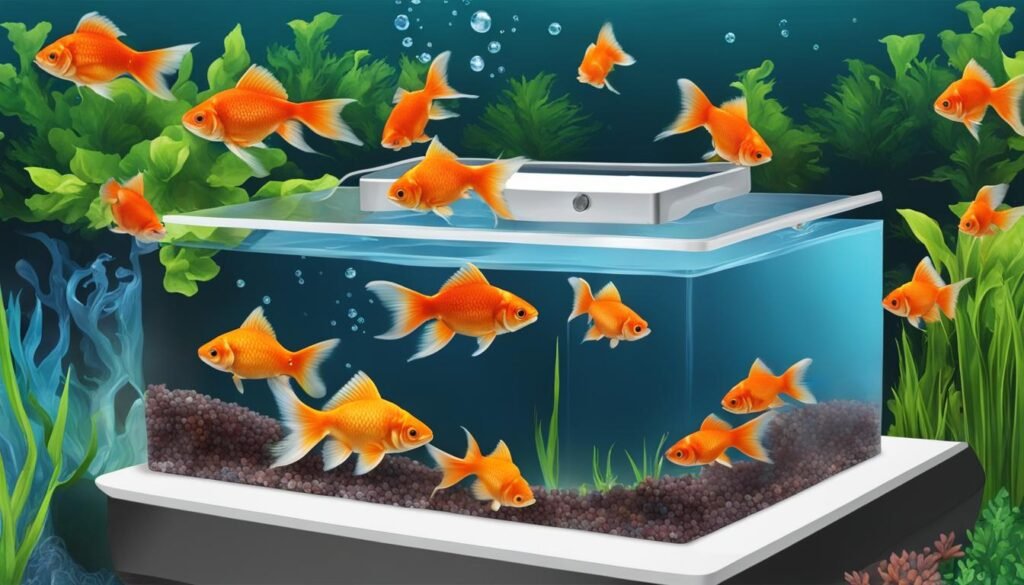
As a responsible goldfish owner, it’s essential to monitor and maintain the water quality in your fish tank. By doing so, you can ensure your goldfish are living in the best possible conditions and maintain their health and well-being.
Regular testing of the water parameters is crucial to achieving ideal water conditions for your goldfish. Using a test kit, you can measure key factors such as temperature, pH, ammonia, nitrite, and nitrate levels. These test results will help you make informed decisions about necessary adjustments to the water conditions.
It’s essential to maintain water quality for goldfish. By monitoring and testing regularly, you can quickly identify issues before they become severe and take immediate corrective action to keep your goldfish healthy. The ideal water parameters for goldfish are essential to achieve optimal health and well-being and to ensure that your goldfish thrive.
- Performing regular water changes
- Using high-quality filtration systems
- Avoiding overfeeding your goldfish
- Keeping the tank clean and free of debris
- Monitoring water temperature and adjusting as needed
Maintaining ideal water parameters for goldfish takes time and effort, but it’s worth it to ensure the health and happiness of your finned friends. By taking proactive steps to monitor and test the water conditions, and making necessary adjustments, you can achieve optimal water conditions for your goldfish.
Conclusion: Optimal Water Conditions for Goldfish Care
As a goldfish owner, I understand how crucial it is to maintain the best water parameters for their health and well-being. By following the guidelines outlined in this master guide, you can provide your goldfish with the perfect environment to thrive.
Remember, proper temperature, pH, ammonia, nitrate, and filtration are key factors to consider. It is essential to regularly monitor and test water conditions and make necessary adjustments to ensure the long-term health of your goldfish.
Goldfish care and water parameters go hand in hand. With the right knowledge and care, you can enjoy the beauty and companionship of your goldfish for years to come.
FAQ
Why are water parameters important for goldfish?
Maintaining proper water quality is essential to prevent stress, diseases, and other health issues in goldfish. By ensuring the right water conditions, you are creating a healthy environment for your finned friends to thrive.
What is the ideal temperature range for goldfish?
Goldfish thrive best in water temperatures between 65 to 75 degrees Fahrenheit (18 to 24 degrees Celsius). Maintaining a consistent temperature within this range is crucial for their overall well-being and metabolic function.
What pH levels do goldfish prefer?
Goldfish prefer a pH level between 6.5 and 7.5. It is important to regularly test and adjust the pH of the water to ensure it remains within this range. Fluctuations in pH can cause stress and affect the health of your goldfish.
What are the ammonia and nitrite levels that can harm goldfish?
Ammonia and nitrite are toxic substances that can harm goldfish. It is crucial to keep these levels as close to zero as possible. Regular water testing and effective filtration are essential to maintain a healthy environment for your goldfish.
What are the nitrate levels that should be maintained for goldfish?
While low levels of nitrate are generally tolerable for goldfish, it is important to keep them below 40 parts per million (ppm). Regular water changes can help control nitrate levels and maintain optimal water conditions.
What kind of filtration system should I use for my goldfish tank?
A high-quality filtration system is vital for maintaining optimal water conditions in a goldfish tank. The filter should be capable of removing waste, debris, excess food, and harmful substances effectively. Choosing the right filtration system is crucial for the health and well-being of your goldfish.
How can I ensure proper oxygenation for my goldfish?
Goldfish require well-oxygenated water for their respiratory health. Adequate surface agitation and the use of air stones or water pumps can help maintain proper oxygenation levels in the aquarium. This is particularly important in tanks with a high stocking density.
What is the ideal water parameters like hardness for goldfish?
Goldfish prefer moderately hard water with a hardness level between 150 to 300 ppm. Water hardness can be adjusted using commercial products or through the use of specific substrates in the tank.
How can I remove chlorine and chloramine from tap water for my goldfish?
Tap water often contains chlorine and chloramine, which can be harmful to goldfish. It is essential to use a water conditioner that can neutralize these substances before adding tap water to the aquarium. This step is crucial to ensure the well-being of your goldfish.
How should I monitor and test water parameters for my goldfish?
Regular monitoring and testing of water parameters are essential for the long-term health of your goldfish. Test kits are available to measure temperature, pH, ammonia, nitrite, nitrate, and other crucial parameters. By staying vigilant and proactive, you can quickly address any issues that may arise.
References:
Aquarium and Tropical Fish Association (ATA)
National Aquarium Society (NAS)
I am a passionate aquarist with over 30 years of hands-on experience in fishkeeping. My journey began at a young age, collecting fish from the wild and learning through experimentation. Specializing in tropical fish, I bring a deep understanding of the hobby to FishKeepingMadeSimple. The site provides honest, detailed reviews of essential products and accessories to help fellow enthusiasts create the best environments for their fish.

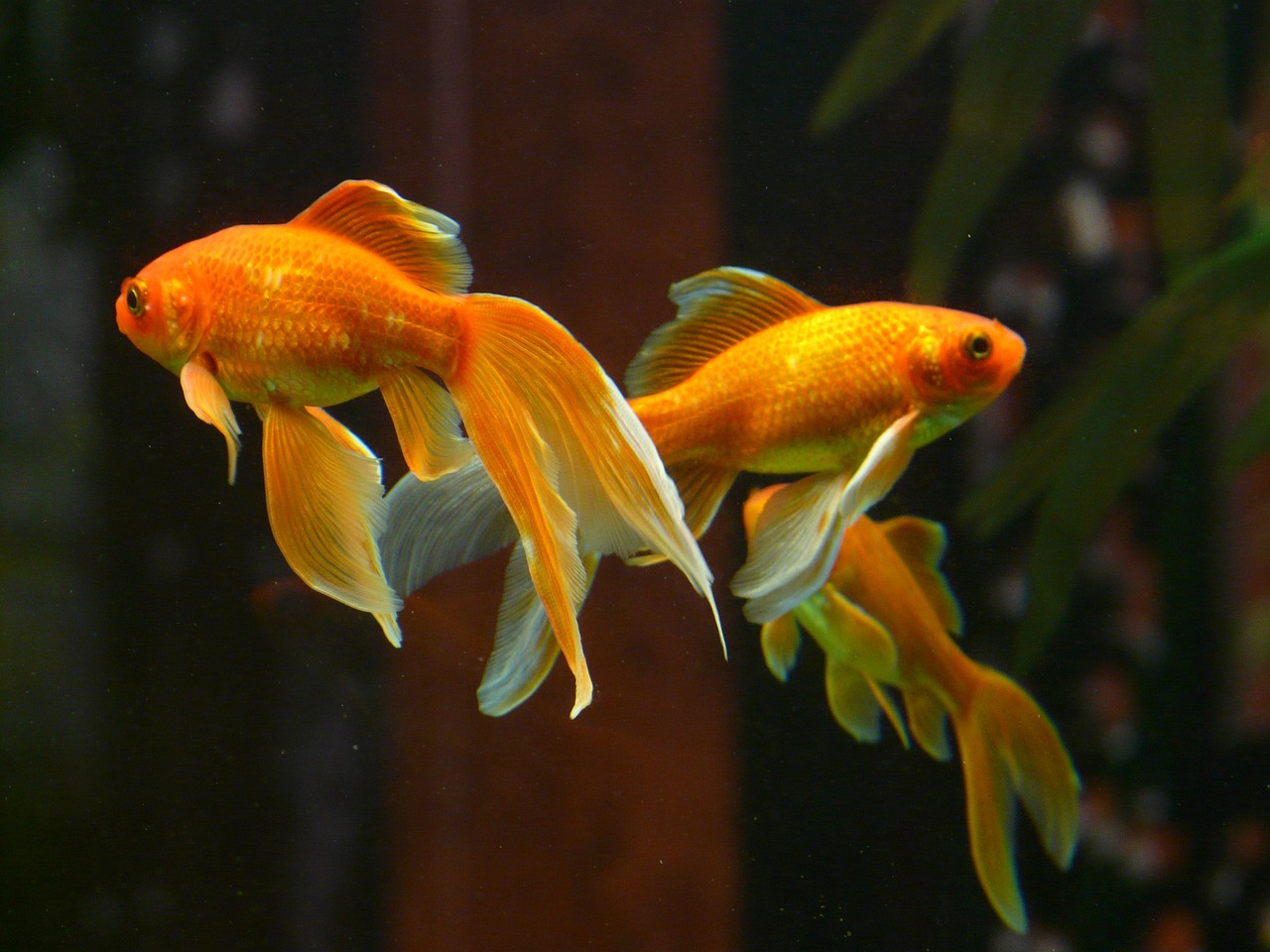
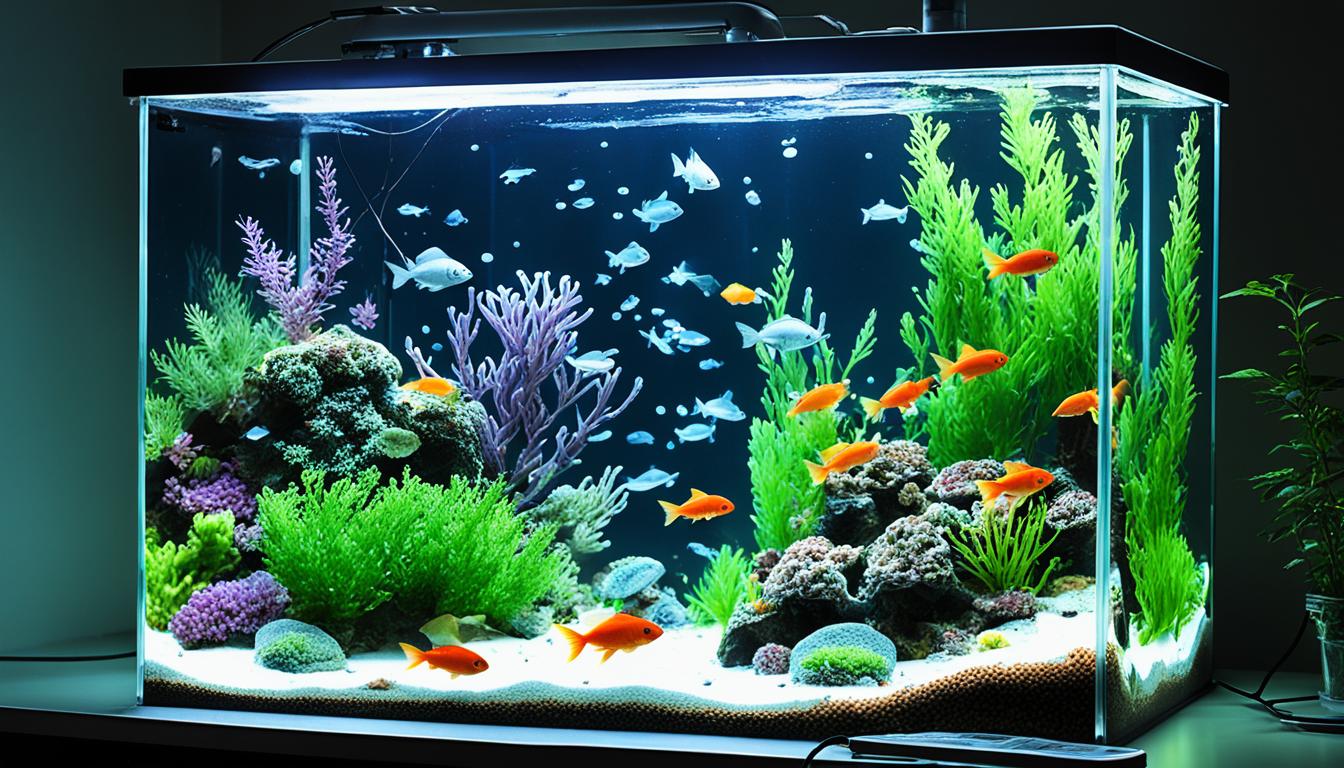
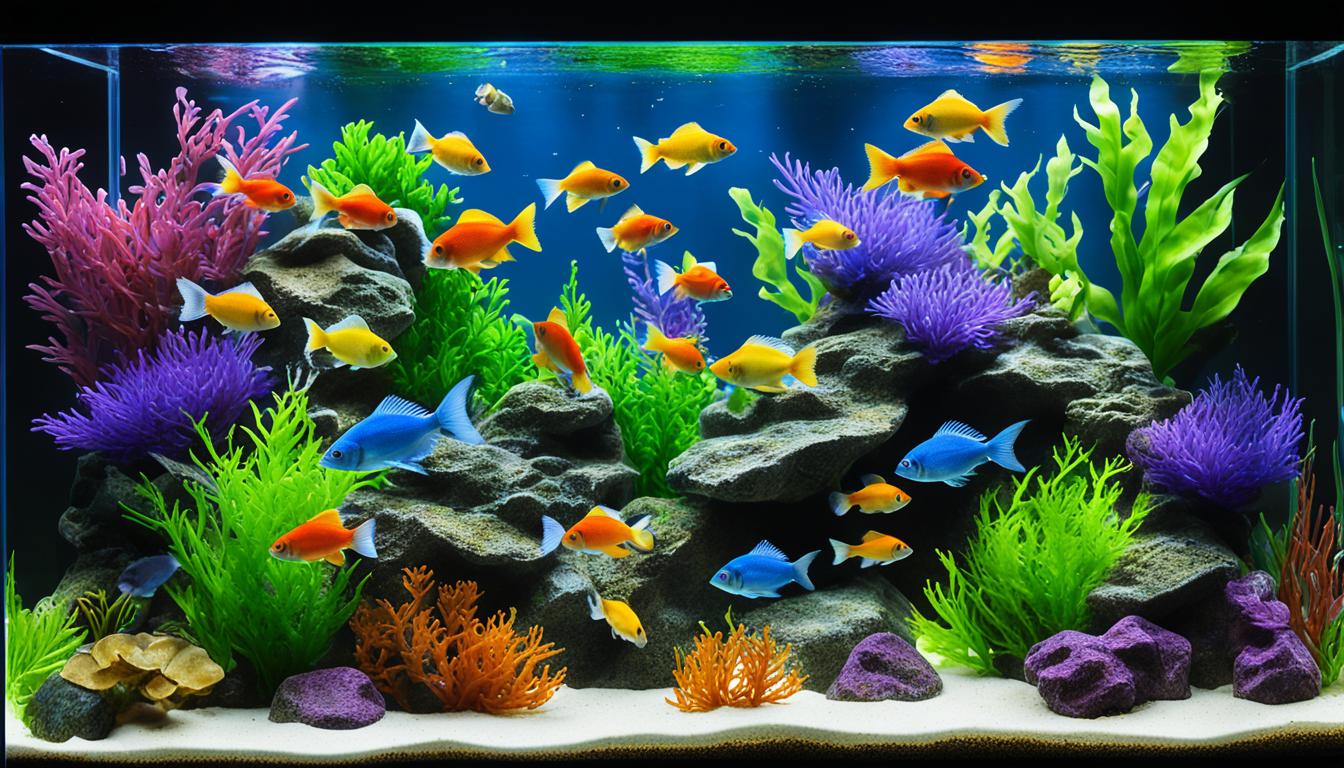






[…] proper water parameters and offer a varied diet to ensure your wrasse’s […]
[…] test the water parameters, including temperature, pH, ammonia, nitrite, and nitrate levels, using appropriate test […]
[…] the right carpet plants depends on factors such as water parameters, lighting intensity, and […]
[…] and 7.0 and ensure it is soft to moderately hard. Regular water changes are necessary to keep the water parameters […]
[…] ideal tank setup and water parameters mimic their natural […]
[…] Proper monitoring and maintenance of water parameters are crucial for the health and vitality of glass fish. Here are the recommended water parameters: […]
[…] Keep the tank clean by performing regular water changes and removing debris. Maintain optimal water parameters to support a healthy immune system in your platy […]
[…] Yellow Labs and Bumblebee Cichlids have similar water parameter requirements, making them compatible tank […]
[…] centimeter every couple of months. Providing them with a high-quality, varied diet and the correct water parameters will help them reach their maximum […]
[…] that your Blue Cochu Tetras thrive in your aquarium. Remember to regularly monitor their health and water parameters to maintain a clean and healthy environment for […]
[…] They are peaceful fish that prefer similar water parameters as black ghost knife fish and can coexist […]
[…] stable water parameters within the ideal range for Caridina […]
[…] growth. Algae growth and pest infestations, like snails, can also affect its health. Monitoring water parameters and providing appropriate care can help prevent these […]
[…] and Easy to Care for: Dalmatian Balloon Molly is a hardy species that can adapt to a wide range of water conditions. This makes them suitable for […]
[…] a 5-gallon tank can accommodate around 10 to 25 cherry shrimp. However, it is crucial to maintain ideal water parameters, provide enough hiding places, and ensure proper filtration and maintenance to support the […]
[…] monitor the water parameters and make appropriate changes to maintain optimal conditions for the […]